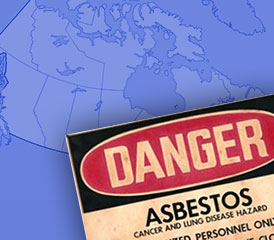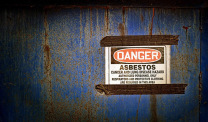Mesothelioma Still Prevalent in Canada Following Asbestos Ban
Asbestos Exposure & BansWritten by Tim Povtak | Edited By Walter Pacheco

More than two years after implementing a much-celebrated ban of asbestos, Canadians have come to realize the real fight has only just begun.
Malignant mesothelioma cancer isn’t going away any time soon.
Asbestos exposure may be the only confirmed cause of mesothelioma, but the nationwide ban of the toxic mineral is not predicted to slow the rise in cases for decades.
It is expected to change the face of those being diagnosed.
“It’s going to be awhile before we see any major decline in numbers,” Dr. Paul Demers, director of the Occupational Cancer Research Centre at Ontario Health, told The Mesothelioma Center at Asbestos.com. “Numbers are still rising for certain groups of people. The ban will be helpful, but this is no time to drop your guard.”
Steady Rise of Mesothelioma Cases
Demers led the latest study conducted by OCRC, expected to soon be released in full, examining the past 25 years of data with the Ontario Cancer Registry. The study looked at demographic patterns, tumor characteristics, diagnostic trends and survival rates.
Demers also looked into the future with serious concerns about the ongoing prevalence of mesothelioma.
The number of cases in Ontario, the most populous province in Canada, has risen steadily, from an annual rate of 75 cases in 1993 to almost 250 in 2017. The numbers are similar to the national average.
Unfortunately, the study also found that the median overall survival rate improved very little over the past 25 years, reaching just 9.3 months. The latest available one- and five-year survival rates were just 40% and 6.3%, respectively.
“Levels of exposure to asbestos have dropped, but numbers of cases have not overall,” Demers said. “They have leveled off. That’s concerning for the future.”
U.S. Faces Similar Concerns with Legacy Asbestos
The ban in Canada may serve as an example of what the United States will face as it moves more aggressively toward a comparable asbestos ban in the coming months.
Canada, which was once one of the world’s most prodigious exporters of raw asbestos, joined more than 60 countries worldwide that have banned the mineral. Canada made it illegal to import, sell, manufacture, trade or use products made with asbestos.
The 2018 Canadian ban contains exemptions that still allow its use in the military, at nuclear facilities and by the chloralkali industry, exemptions likely to come with any ban in the U.S.
The exceptions, though, are not the biggest problem facing a country willing to legislate a ban. The problem is legacy asbestos, a product of its once-ubiquitous use throughout the manufacturing and construction industries for almost a century.
“There is still just so much out there,” Demers said. “It’s where most of the exposure is continuing today.”
Mesothelioma Rates Rising Among Women
The 20- to 60-year latency period between exposure and mesothelioma diagnosis, along with the legacy asbestos throughout the country, help explain the rising trend of non-occupational cases of mesothelioma cancer.
“The really high asbestos exposure that people once got in workplaces is less common today,” Demers said. “Lower exposures from asbestos in buildings where people are living and working – which is gradually escaping into the environment – will become more important over time.”
The study confirmed that the rates of mesothelioma among women and adults over 70 are rising, attributing both demographic changes to less occupational asbestos exposure and more environmental exposure. Rates have declined slightly for men and for those in their 50s and 60s.
“Environmental exposure is equal opportunity,” Demers said. “More people are being exposed at lower levels of asbestos, but we are still seeing cases of disease. People may not know that they have been, or are still being, exposed.”






